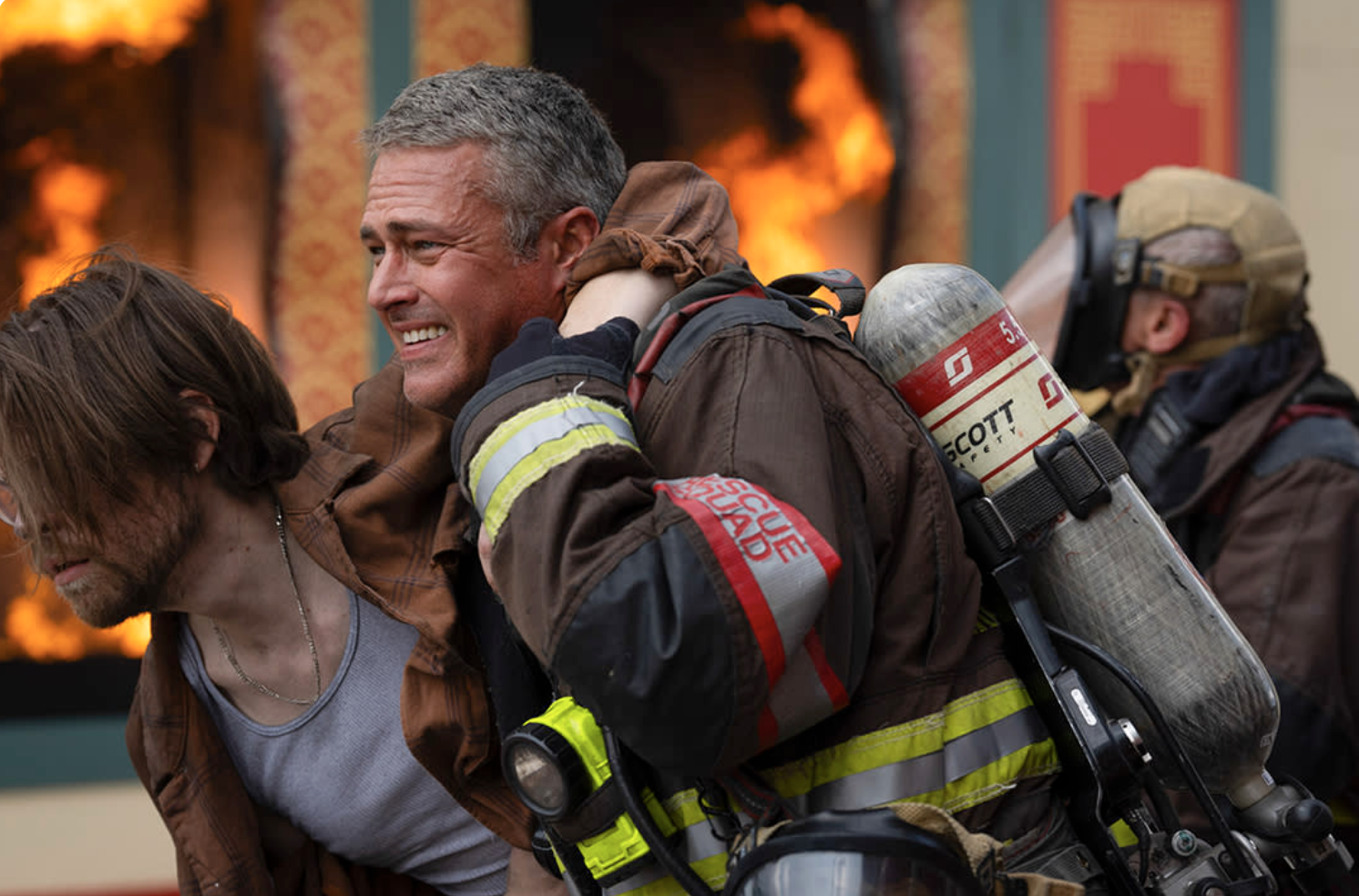
Chicago Fire has never held back when it comes to delivering high‑octane, heart‑pounding rescue scenes that showcase the courage, skill, and sheer determination of Firehouse 51. From a rooftop leap into the unknown to a claustrophobic subway tunnel rescue, these five moments stand out as pure adrenaline rushes—moments fans return to time and again. Here’s a deeper dive into each sequence, complete with behind‑the‑scenes insights and why they still resonate.
1. Severide’s Daredevil Leap from a Burning High‑Rise
Episode: “Pilot” (Season 1, Episode 1)
When an apartment block catches fire and the only stairwell is engulfed, Kelly Severide (Taylor Kinney) makes the split‑second decision to launch himself from the fifth‑floor balcony into the courtyard below. The slow‑motion shot of his oxygen tank trailing behind him, the look of fierce resolve on his face, and the sickening pull of gravity create an unforgettable beat-the-clock moment.
-
Why It Thrills: We feel every heartbeat as Severide commits to the jump, knowing it’s a one‑way ticket ruled by courage rather than caution.
-
Heroic Edge: This scene cements Severide’s reputation as the team’s greatest daredevil—someone willing to sacrifice his own safety for the chance at a successful rescue.
-
Behind‑the‑Scenes: Filmed inside a custom-built, heat‑proof container with actor harnessed to safety cables, the production used high‑speed cameras to capture multiple angles of the stunt, then slowed the footage in post‑production for maximum impact.
2. The Subway Tunnel Rescue Under Poisonous Smoke
Episode: “A Coffin That Small” (Season 5, Episode 13)
A catastrophic explosion beneath a busy subway platform sends passengers tumbling into darkness, trapped under debris and thick, toxic smoke. Engine 51 and Truck 81 swap gear mid‑mission to navigate the cramped tunnel, pulling injured bystanders to safety while avoiding collapsing beams and gusts of noxious gas.
-
Why It Thrills: The tunnel’s oppressive darkness and rivaling heartbeats of man and fire create a sensory overload—no lines of sight, no margin for error.
-
Teamwork in Action: Watching Casey coordinate radios, Severide clear rubble, and Boden direct evacuation highlights Firehouse 51’s unbreakable bond.
-
Behind‑the‑Scenes: The “tunnel” was a 1,200 m² set, complete with hydraulic platforms that jostled the floor. Layers of fog machines and colored lighting simulated smoke and sparks, while GoPro cameras on helmets offered first‑person views of the chaos.
3. Battling a Chemical Plant Inferno
Episode: “Let Him Die” (Season 4, Episode 9)
A nearby chemical plant erupts in a volatile blaze, sending flames and toxic vapors skyward. Mouch and Antonio Dawson deploy specialized CO₂ extinguishers, crouching low to avoid inhalation of dangerous fumes. Every spray, hiss, and flicker of light intensifies the fight against an enemy that can kill with a single breath.
-
Why It Thrills: This isn’t a run‑of‑the‑mill house fire—it’s a high‑risk, high‑stakes battle against unseen threats.
-
Technical Prowess: Showcasing their deep knowledge of fire chemistry, the duo neutralizes the blaze without contaminating themselves or the environment.
-
Behind‑the‑Scenes: The production team used safe “chemical fire” gels and CGI to render vibrant, otherworldly flames. Actors trained with real CO₂ cylinders—minus live hazards—so their movements and reactions stayed authentic.
4. Vertical Rescue: Saving Lives in a Malfunctioning Elevator
Episode: “In the Line of Duty” (Season 2, Episode 5)
Trapped between floors in a malfunctioning elevator as smoke billows from the shaft, a group of maintenance workers faces certain peril. Christopher Herrmann and Gabriela Dawson rig a rope hoist from above to open the elevator car manually. When the doors finally part, the pair must haul each person through a narrow opening, one by one, as the fire inches ever closer.
-
Why It Thrills: The confined space multiplies fear—there’s no room to maneuver, and every second counts as the fire advances.
-
Skill Under Pressure: The team’s mastery of rope‑rescue techniques shines, reminding us that heroism often takes the form of slow‑burn competence rather than grand gestures.
-
Behind‑the‑Scenes: Filmed with practical effects, the “elevator car” was mounted on a hydraulic rig for realistic rocking. Actors wore concealed harnesses so stunts could be executed safely, while tight camera framing enhanced the claustrophobic feel.
5. The Warehouse Explosion and Its Heart‑Wrenching Fallout
Episode: “One More Light” (Season 2, Episode 8)
A routine call to a warehouse full of flammable materials spirals into disaster when an unexpected gas leak ignites. Leslie Shay sacrifices herself by barricading a secondary door to buy time for her teammates. The emotional weight—the slow–motion flash of her selfless act, the anguished cries of her friends—elevates this from a rescue mission to a timeless testament of human sacrifice.
-
Why It Thrills (and Moves): We not only fear for the survivors but grieve for Shay, making this sequence as emotionally powerful as it is action‑packed.
-
Legacy of Sacrifice: Her heroism cements the series’ core message: sometimes the greatest rescue is the one we make for each other.
-
Behind‑the‑Scenes: This scene combined practical fire rigs with blue‑screen extensions for safety. Actress Lauren German filmed her final moments in one continuous take to capture genuine emotion, supported by handheld camera work that mirrored the characters’ horror.
Which Rescue Gave You the Biggest Rush?
“Comment the number—1 through 5—that had your heart racing the most, and tag your fellow Firehouse 51 fan to see if they agree!”
